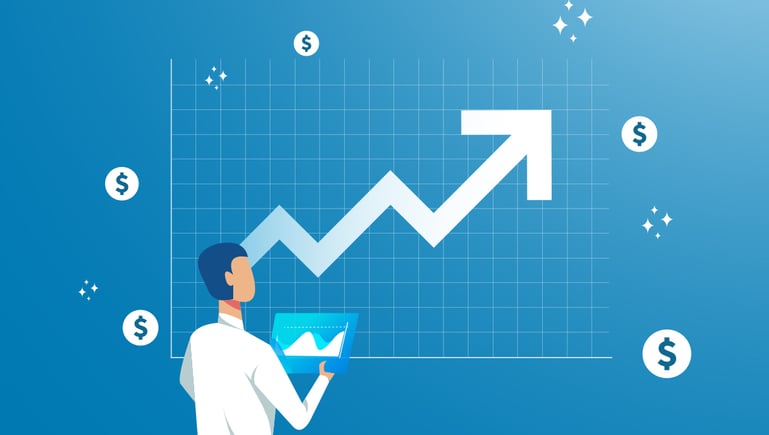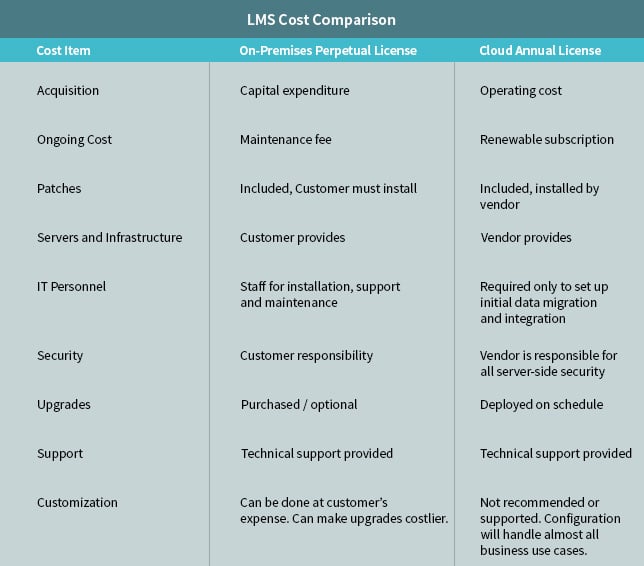
Over the past decade, the explosive growth of computing power has brought a new era of measurement and analytics to operations, marketing, and finance. Knowing the financial impact of business decisions has become almost routine, and the more analytical tools cross organizational boundaries, the better the business intelligence has become.
There is increasing pressure on Enterprise Learning and Development to show a return on investment, but in most organizations L&D has struggled to keep up. We want to offer ways you can show the value of your SumTotal LMS investment and the impact of learning on business results.
Much of the solution is learning to ask the right questions. We will delve into that, but before we do, let’s look at the impact of technology and the growth of cloud platforms.
ROI of a New LMS
If you are acquiring a learning management system for the first time, there are metrics that will help you make the case for your new platform.
- Lower administrative costs
- Reduce travel expenses for remote training by implementing virtual classrooms and e-Learning
- Reduced cost of taking employees off the job to attend training
- Cost comparison of training development with curated content
- Improved time to productivity for new hires and product changes
- Reduction in turnover due to increased learning opportunities
ROI of On-Premises to Cloud Deployment
If you are thinking about replacing your LMS, this may be a good time to reduce cost by moving from an on-premises platform to a cloud LMS. Implementation costs are shrinking. Installations that took months or years and cost hundreds of thousands of dollars now take weeks. The costs of LMS implementation now range from zero to less than $100K.
A word of caution: Your organizational needs will determine your implementation costs. A large, complex implementation will be costlier. Jumping on a free implementation for a platform that doesn’t meet your needs will cost more in the long run.
Cost Comparisons
Moving from an on-premises platform to the cloud has a lower total cost of ownership in the first three to five years. Most businesses use that time frame for planning. After that, the costs for a cloud platform can be higher. We believe the additional cost pays off in flexibility and included upgrades. An on-premises platform will become obsolete without expensive upgrades.
Pricing models vary, and there is no common lexicon to help make comparisons. You will need to evaluate each licensing model to see if it meets your needs. You can use the table below to help with your cost comparison.
Measuring Learning Activity
We use three types of measurement when we are evaluating learning: efficiency, effectiveness, and quality. Each of these suggestions can be framed as a question, and each one can be answered by stating the impact in financial terms -- the language of business.
For each of the suggestions we list, frame it as a question and seek the answer. It will be in Key Performance Indicators (KPIs), revenue, or cost. If you find you don’t have a specific measure you can pinpoint, try correlation to revenue per employee.
Efficiency
When we speak of efficiency measures, we refer to internal efficiencies in L&D. They will normally manifest themselves in reduced time and cost, but could be revenue opportunities.
- Cost reduction from automated and streamlined learning processes
- Reduction in training materials cost by using e-learning and online content
- Reduced time to value in delivering new learning
- Cost savings realized by using MOOCs and free online content
- Revenue realized from selling training to partners and customers
Effectiveness
Effectiveness measures are those that identify when learning took place and what impact it had. Many of these measures will result from a specific learning intervention.
- Learning retention measured by assessments.
- Improved sales because of a learning intervention.
- Improved sales due to partner training.
- Decreased support costs due to customer education and training.
- Increased customer engagement and repeat sales due to customer education and training.
- Decreased cycle times in operational processes attributable to learning.
- Lower risk exposure due to better tracking of compliance training.
- Fewer accidents and worker’s compensation claims because of improved safety training.
- Improved revenue per employee due to a learning intervention.
- Any other business KPI affected by learning activities.
Quality
Although they are harder to quantify, quality measures are important. Many of them have a secondary impact on business performance, but it is possible to draw a correlation.
- Increase in employee engagement due to improved learning and development opportunity
- Retention of high potential employees in succession management due to learning opportunities and structured mentoring.
- Increase in social learning activity due to social media tools in the LMS and the ability to create and share content.
Next Steps
We hope these lists of suggestions helps you work through all the many ways to evaluate and measure the impact of learning. We believe the most important step you will take will be to align learning to the business.
Begin by engaging in conversations around the organization about performance. Where performance could be improved with learning or a learning technique such as gamification, work with the process owners to design an improvement and measure the result. You will have solid evidence that learning pays.
Pixentia is a full-service technology company dedicated to helping clients solve business problems, improve the capability of their people, and achieve better results.



